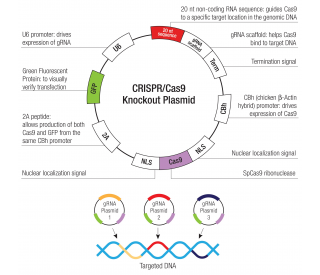Species Reactivity
Human
Specificity
Detects human STIM1 in direct ELISAs. In direct ELISAs, no cross-reactivity with recombinant human STIM2 is observed.
Source
Monoclonal Mouse IgG 2B Clone # 705129
Purification
Protein A or G purified from hybridoma culture supernatant
Immunogen
E. coli-derived recombinant human STIM1
Leu23-Thr182
Accession # Q13586Formulation
Lyophilized from a 0.2 μm filtered solution in PBS with Trehalose. *Small pack size (SP) is supplied as a 0.2 µm filtered solution in PBS.
Label
Unconjugated
Applications
Recommended
ConcentrationSample
Immunohistochemistry
8-25 µg/mL
See below
Please Note: Optimal dilutions should be determined by each laboratory for each application. are available in the Technical Information section on our website.
Data Examples
Immunohistochemistry | STIM1 in Human Brain. STIM1 was detected in immersion fixed paraffin-embedded sections of human brain (cerebellum) using Mouse Anti-Human STIM1 Monoclonal Antibody (Catalog # MAB69761) at 15 µg/mL overnight at 4 °C. Before incubation with the primary antibody, tissue was subjected to heat-induced epitope retrieval using Antigen Retrieval Reagent-Basic (Catalog # ). Tissue was stained using the Anti-Mouse HRP-DAB Cell & Tissue Staining Kit (brown; Catalog # ) and counterstained with hematoxylin (blue). Specific staining was localized to cytoplasm in Purkinje neurons. View our protocol for . |
Preparation and Storage
Reconstitution
Sterile PBS to a final concentration of 0.5 mg/mL.
Shipping
The product is shipped at ambient temperature. Upon receipt, store it immediately at the temperature recommended below. *Small pack size (SP) is shipped with polar packs. Upon receipt, store it immediately at -20 to -70 °C
Stability & Storage
Use a manual defrost freezer and avoid repeated freeze-thaw cycles.
12 months from date of receipt, -20 to -70 °C as supplied.
1 month, 2 to 8 °C under sterile conditions after reconstitution.
6 months, -20 to -70 °C under sterile conditions after reconstitution.
Background: STIM1
STIM-1 (stromal interaction molecule 1), previously called GOK, is a 90 kDa type I transmembrane protein of the endoplasmic reticulum (ER). When STIM-1 senses depletion of calcium in the ER via its EF-hand domain (aa 63-98), it interacts with the plasma membrane Ca2 + release-activated Ca2 + (CRAC) channel Orai1, increasing Ca2 + influx. The human STIM-1 extracellular/lumenal domain (aa 23-213) contains an EF hand Ca2 +-binding motif and a SAM (sterile a-motif) multimerization domain. A potential isoform is truncated at aa 491. Defects in STIM1 are the cause of immune dysfunction with T-cell inactivation due to calcium entry defect type 2 (IDTICED2). Within the region used as an immunogen, human STIM1 shares 95% amino acid identity with mouse and rat STIM1.
Long Name:
Stromal Interaction Molecule 1
Entrez Gene IDs:
6786 (Human); 20866 (Mouse); 361618 (Rat)
Alternate Names:
GOK; GOKD11S4896E; STIM1; stromal interaction molecule 1










